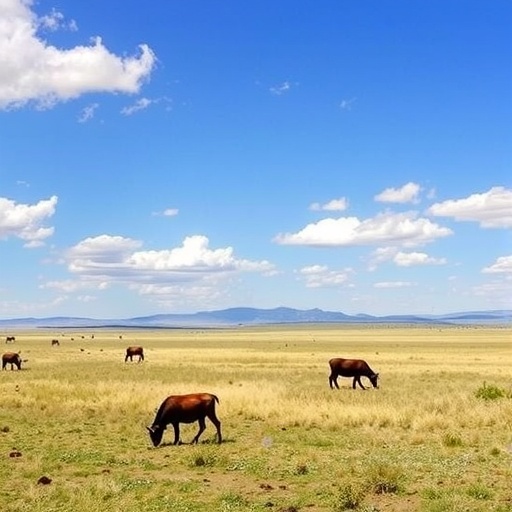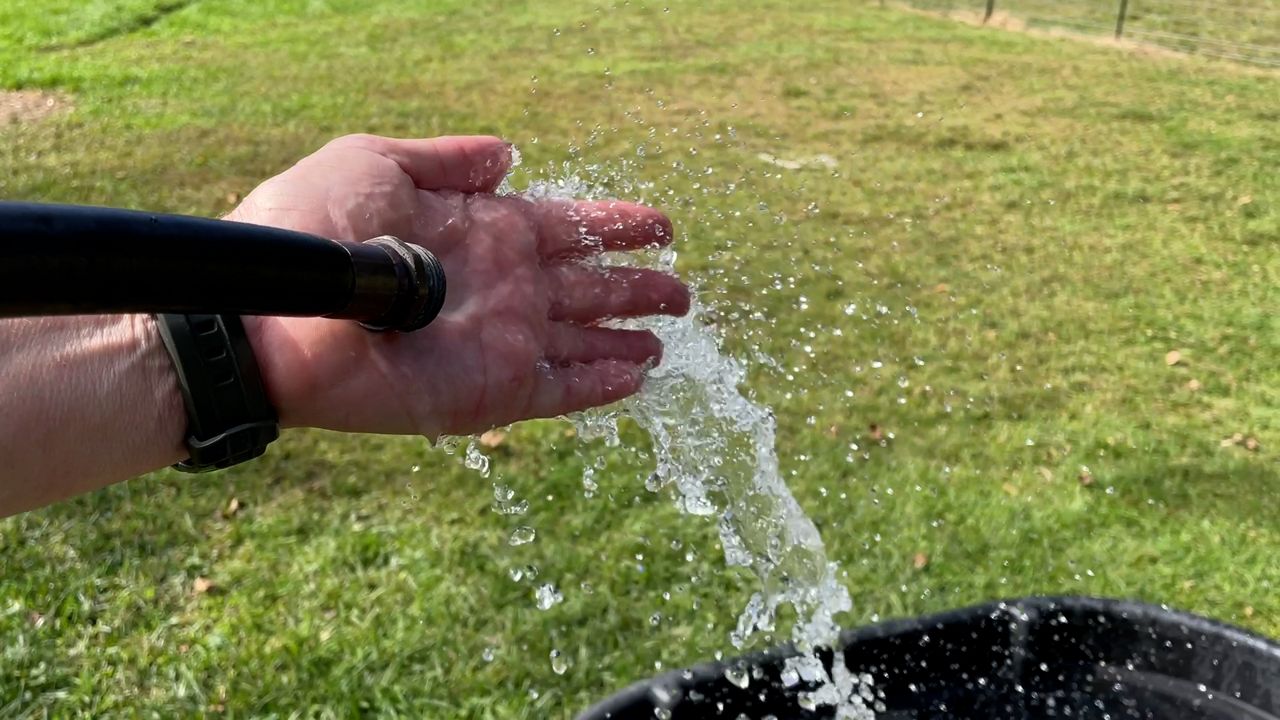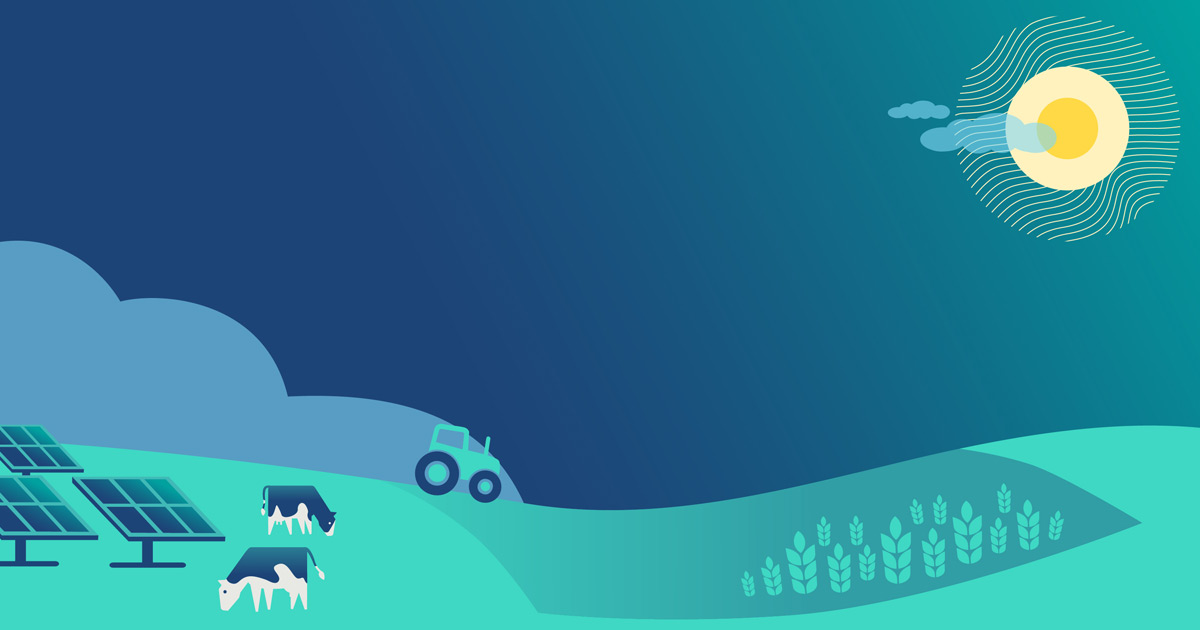US (MN): MDA invests over $1.6M in urban agriculture – Hortidaily

Report on Minnesota’s Fiscal Year 2025 Urban Agriculture Grant Program
Executive Summary
The Minnesota Department of Agriculture (MDA) has allocated $1,692,957 to 33 projects under the Fiscal Year 2025 Urban Agriculture Grant Program. Funded through the Agricultural Growth, Research, and Innovation (AGRI) Program, these grants target urban areas, including cities with populations over 5,000 and communities on federally recognized tribal lands. The initiative is designed to strengthen local food systems and promote agricultural education, directly contributing to several United Nations Sustainable Development Goals (SDGs), including SDG 2 (Zero Hunger), SDG 4 (Quality Education), SDG 8 (Decent Work and Economic Growth), SDG 10 (Reduced Inequalities), and SDG 11 (Sustainable Cities and Communities). Grant recipients include nonprofit organizations, educational institutions, and local government entities, which will use the funds for equipment, infrastructure improvements, and staffing.
Funded Projects and SDG Alignment
- Appetite For Change, Minneapolis: To advance SDG 4 (Quality Education) and SDG 8 (Decent Work and Economic Growth), this project will provide paid, hands-on agricultural training for 30 youth. It also supports SDG 2 (Zero Hunger) by growing and donating 7,500 lbs. of produce.
- Augsburg University, Minneapolis: This initiative enhances the Augsburg Community Garden to support SDG 2 (Zero Hunger) by increasing culturally relevant food production and promotes SDG 11 (Sustainable Cities and Communities) through infrastructure upgrades and multilingual community events.
- Boys & Girls Club of the Bemidji Area, Bemidji: The project revitalizes a garden space to advance SDG 4 (Quality Education) with a new curriculum, addresses SDG 13 (Climate Action) through rainwater capture, and supports SDG 15 (Life on Land) by adding a pollinator garden.
- Child Care Choices Inc. dba Milestones, Waite Park: Focusing on SDG 4 (Quality Education), the “Harvesting Bright Futures” project will equip 100 child care educators with tools and training, reaching over 600 children annually to foster early learning in urban agriculture.
- City of Richfield, Recreation Dept, Richfield Farmers Market, Richfield: This project supports SDG 4 (Quality Education) and SDG 8 (Decent Work and Economic Growth) by offering programs on gardening, cooking, and food business development, while also strengthening SDG 11 (Sustainable Cities and Communities) through the installation of garden infrastructure.
- Darling Little Farm, St. Paul: To promote SDG 10 (Reduced Inequalities), this project provides weekly agriculture workshops for persons with disabilities and their caretakers, developing a specialized curriculum to ensure inclusive educational opportunities.
- East Phillips Neighborhood Institute, Minneapolis: This initiative advances SDG 4 (Quality Education) and SDG 10 (Reduced Inequalities) by offering free, environmentally-focused workshops informed by Indigenous traditional knowledge for K-12 youth and the wider community.
- Folwell Neighborhood Association, Minneapolis: By adding infrastructure to enhance garden functionality and accessibility, this project contributes to SDG 11 (Sustainable Cities and Communities). It also supports SDG 8 (Decent Work and Economic Growth) by providing stipends to garden managers.
- Freedom Farms MPLS, Minneapolis: This project transforms a vacant lot to advance multiple goals: SDG 2 (Food Security), SDG 11 (Sustainable Cities and Communities), SDG 12 (Responsible Consumption and Production) through sustainability workshops, and SDG 8 (Decent Work and Economic Growth) by creating local job opportunities.
- Friendly Hmong Farms LLC, Minnetonka: Focusing on SDG 5 (Gender Equality) and SDG 8 (Decent Work and Economic Growth), this project launches a professional development program for Hmong women farmers, emphasizing regenerative farming and entrepreneurship.
- Friends School of Minnesota, St. Paul: To support SDG 4 (Quality Education), this initiative will install raised beds, fruit trees, a hydroponic system, and chickens, engaging K-8 students in hands-on agricultural learning.
- Frog Tree Farm, Brooklyn Park: This project empowers urban youth, contributing to SDG 4 (Quality Education) and SDG 8 (Decent Work and Economic Growth) by providing farm education, soil health projects, and fostering agricultural career pathways.
- Global Entrepreneurship Week Minnesota, St. Paul: By expanding a family farming program and implementing a tiered mentorship system, this project advances SDG 4 (Quality Education), training teens to teach younger children about sustainable agriculture.
- Hand In Hand, Roseville: The project establishes a self-sustaining farm for hands-on educational programming, contributing to SDG 4 (Quality Education) and SDG 12 (Responsible Consumption and Production) through the integration of a greenhouse, composting, and hydroponics.
- Harvest Hope Farm, Moorhead: This initiative engages youth with mobile and on-site farm camps, supporting SDG 4 (Quality Education) and SDG 3 (Good Health and Well-being) through learning tools and creative activities.
- Headwaters Regional Development Commission, Bemidji: By revitalizing a community garden with new beds, soil, and irrigation, this project directly supports SDG 11 (Sustainable Cities and Communities) and SDG 2 (Zero Hunger) by connecting residents to local food production.
- Hermantown Community Schools, Hermantown: The development of the Hermantown Learning Garden will expose Pre-K-5 youth to the plant growth cycle, advancing SDG 4 (Quality Education) through hands-on learning opportunities.
- Humboldt High School Garden Project, St. Paul: This project expands a school garden to support SDG 4 (Quality Education), creates employment opportunities for students in line with SDG 8 (Decent Work and Economic Growth), and enhances food production, contributing to SDG 2 (Zero Hunger).
- Irreducible Grace Foundation, St. Paul: To advance SDG 10 (Reduced Inequalities), this project enhances youth engagement at Frogtown’s Black Youth Healing Arts Center, integrating African American heritage gardening methods and launching a Pay-What-You-Can market to address SDG 2 (Zero Hunger).
- Lake Region Healthcare Foundation, Fergus Falls: This project increases food production capacity for donation to food shelves, directly addressing SDG 2 (Zero Hunger). It also creates a youth internship, contributing to SDG 4 (Quality Education) and SDG 8 (Decent Work and Economic Growth).
- Lower Phalen Creek Project, St. Paul: A four sisters demonstration garden will be established, promoting SDG 10 (Reduced Inequalities) by ensuring the space is accessible to youth, elders, and those with physical disabilities, while honoring Indigenous agricultural practices.
- Midwest Food Connection, St. Paul: This project offers K-12 students hands-on urban agriculture education and mentorship opportunities, directly supporting SDG 4 (Quality Education) by connecting youth with local food systems.
- Native American Community Development Institute, Minneapolis: By improving programming and infrastructure across three sites, this initiative enhances community food sovereignty, contributing to SDG 2 (Zero Hunger), and provides a summer internship, supporting SDG 8 (Decent Work and Economic Growth).
- Northwestern Minnesota Juvenile Center, Bemidji: This project provides youth with hands-on agricultural opportunities by restoring a greenhouse, aligning with SDG 4 (Quality Education) and SDG 10 (Reduced Inequalities) by offering skills training to a vulnerable population.
- Owatonna Alternative Learning Center, Owatonna: The implementation of a hydroponic agriculture program will teach students green-tech skills and entrepreneurship, contributing to SDG 4 (Quality Education), SDG 8 (Decent Work and Economic Growth), and SDG 9 (Industry, Innovation and Infrastructure).
- Pillsbury United Communities, Minneapolis: This initiative supports paid youth internships in the food system, directly advancing SDG 8 (Decent Work and Economic Growth) and SDG 4 (Quality Education) by using on-site gardens as educational classrooms.
- Seward Montessori Parent Teacher Association, Minneapolis: The construction of a vegetable and medicinal plant garden will promote environmental stewardship and hands-on learning, contributing to SDG 12 (Responsible Consumption and Production) and SDG 4 (Quality Education).
- Sheridan Neighborhood Organization, Minneapolis: By expanding a donation garden, this project enhances food security (SDG 2), sustainability (SDG 12), and community engagement (SDG 11), while creating a paid Garden Manager position (SDG 8).
- Sustainable Farming Association, Minneapolis: This project supports the Twin Cities Metro Growers Network with educational and networking events, fostering SDG 17 (Partnerships for the Goals) and SDG 4 (Quality Education) to strengthen sustainable farming skills.
- Textile Center, Minneapolis: The expansion of a Dye Garden will provide accessible, multilingual fiber-art education, supporting SDG 4 (Quality Education) and SDG 11 (Sustainable Cities and Communities) through internships, classes, and improved public space.
- UMN Extension 4-H Youth Development, Minneapolis: This project empowers youth to understand the link between climate science and food systems, directly addressing SDG 13 (Climate Action) and SDG 4 (Quality Education) through hands-on projects like building hydroponic systems and creating climate story podcasts.
- Urban Roots MN, St. Paul: Funding will support Market Garden and Community Garden Programs by improving water infrastructure (SDG 6), covering staff wages and mentor stipends (SDG 8), and acquiring farm equipment to bolster local food systems (SDG 2).
- Urban Ventures, Minneapolis: This project will develop a cohort of educators to instruct 500 youth in agriculture and nutrition, significantly expanding its impact on SDG 4 (Quality Education) and providing employment for youth educators and a hydroponics manager (SDG 8).
Analysis of Sustainable Development Goals in the Article
1. Which SDGs are addressed or connected to the issues highlighted in the article?
- SDG 2: Zero Hunger: The article focuses on urban agriculture grants aimed at expanding access to locally grown foods, increasing food production, improving food security, and donating produce to food shelves.
- SDG 4: Quality Education: A significant number of the funded projects are centered on youth agricultural education, providing hands-on training, developing curricula, and teaching students about farming, sustainability, and food systems.
- SDG 5: Gender Equality: The article mentions a specific project, Friendly Hmong Farms LLC, which aims to provide professional development for Hmong women farmers, directly supporting the economic empowerment of women in agriculture.
- SDG 8: Decent Work and Economic Growth: Several initiatives aim to create local agricultural job opportunities, provide paid internships for youth, and develop entrepreneurship skills, contributing to economic growth and decent work.
- SDG 10: Reduced Inequalities: The program targets diverse communities, including those on federally recognized tribal lands. Specific projects are designed for persons with disabilities (Darling Little Farm), Indigenous communities (East Phillips Neighborhood Institute), and underserved youth, promoting social and economic inclusion.
- SDG 11: Sustainable Cities and Communities: The core of the article is about strengthening urban agriculture, transforming vacant lots into green spaces, enhancing community gardens, and making these spaces more accessible and functional for urban residents.
- SDG 13: Climate Action: One project by UMN Extension 4-H explicitly aims to empower youth to understand the connections between climate science and food systems. Another project involves capturing rainwater to prevent flooding, which is a climate adaptation strategy.
2. What specific targets under those SDGs can be identified based on the article’s content?
- Target 2.1: End hunger and ensure access to safe, nutritious and sufficient food. This is addressed by projects that “expand access to locally grown foods” and donate produce to food shelves, such as the Lake Region Healthcare Foundation project.
- Target 4.4: Substantially increase the number of youth and adults who have relevant skills, including technical and vocational skills, for employment, decent jobs and entrepreneurship. This is reflected in projects offering “paid hands-on training” (Appetite For Change), teaching “green-tech skills” (Owatonna Alternative Learning Center), and focusing on entrepreneurship.
- Target 4.7: Ensure that all learners acquire the knowledge and skills needed to promote sustainable development. This is evident in the numerous educational programs focused on sustainable growing practices, environmental stewardship, and the connection between food systems and climate science.
- Target 5.5: Ensure women’s full and effective participation and equal opportunities for leadership. The Friendly Hmong Farms project directly supports this by launching a “professional development program for Hmong women farmers.”
- Target 8.6: Substantially reduce the proportion of youth not in employment, education or training. The article highlights several programs providing “paid youth interns” (Pillsbury United Communities) and stipends for youth, directly engaging them in productive activities.
- Target 10.2: Empower and promote the social, economic and political inclusion of all, irrespective of age, sex, disability, race, ethnicity, etc. This is addressed by projects like Darling Little Farm, which provides workshops for “persons with disabilities,” and the Lower Phalen Creek Project, which makes its garden space “accessible to community members, including youth, elders, and those with physical disabilities.”
- Target 11.7: Provide universal access to safe, inclusive and accessible, green and public spaces. This is a central theme, with projects like Freedom Farms MPLS aiming to “Transform a vacant North Minneapolis lot into a vibrant green space” and others working to enhance the “functionality and accessibility” of community gardens.
3. Are there any indicators mentioned or implied in the article that can be used to measure progress towards the identified targets?
- Quantity of food produced/donated: The Appetite For Change project specifies a goal to “grow and donate 7,500 lbs. of produce,” which is a direct quantitative indicator for Target 2.1.
- Number of participants in educational programs: The article provides specific numbers for several projects, such as “benefiting 30 youth” (Appetite For Change), equipping “100 family child care educators” to reach “over 600 young children” (Child Care Choices Inc.), and instructing “500 youth” (Urban Ventures). These numbers serve as indicators for Target 4.4 and 4.7.
- Number of youth in paid positions: The mention of “paid hands-on training,” “cohorts of paid youth interns,” and funding for “stipends and coordinators” implies that the number of youth receiving payment for their work can be tracked as an indicator for Target 8.6.
- Number of new or improved green spaces: The article describes projects that “Install seven raised beds, fruit trees, a hydroponic system” (Friends School of Minnesota) and “Transform a vacant North Minneapolis lot,” indicating that the number and scale of these infrastructure improvements can be measured for Target 11.7.
- Number of individuals from specific groups reached: The focus on programs for “persons with disabilities,” “Hmong women farmers,” and Indigenous communities implies that the number of participants from these targeted groups is a key indicator of success for Target 10.2 and 5.5.
- Development of educational resources: The creation of a “tailored curriculum” (Appetite For Change) or a “new curriculum” (Boys & Girls Club of the Bemidji Area) is a tangible output that can be measured as an indicator of progress in educational goals.
4. SDGs, Targets, and Indicators Table
| SDGs | Targets | Indicators |
|---|---|---|
| SDG 2: Zero Hunger | 2.1 End hunger and ensure access to safe, nutritious and sufficient food. | – Amount of produce grown and donated (e.g., “7,500 lbs. of produce”). – Number of community gardens increasing production capacity. |
| SDG 4: Quality Education | 4.4 Increase the number of youth and adults with relevant skills for employment and entrepreneurship. 4.7 Ensure learners acquire knowledge for sustainable development. |
– Number of youth and adults participating in agricultural training (e.g., “30 youth,” “500 youth”). – Number of educators trained (e.g., “100 family child care educators”). – Number of new curricula developed. |
| SDG 5: Gender Equality | 5.5 Ensure women’s full and effective participation and equal opportunities. | – Number of women farmers enrolled in professional development programs (e.g., Friendly Hmong Farms program). |
| SDG 8: Decent Work and Economic Growth | 8.6 Reduce the proportion of youth not in employment, education or training. | – Number of youth employed in paid internships or receiving stipends. – Number of local agricultural job opportunities created. |
| SDG 10: Reduced Inequalities | 10.2 Empower and promote the social and economic inclusion of all. | – Number of programs targeting specific groups (e.g., persons with disabilities, Indigenous communities). – Number of accessible garden spaces and infrastructure created. |
| SDG 11: Sustainable Cities and Communities | 11.7 Provide universal access to safe, inclusive and accessible, green and public spaces. | – Number of vacant lots converted to green spaces. – Number of community gardens with enhanced infrastructure and accessibility. |
| SDG 13: Climate Action | Integrate climate change measures into policies, strategies and planning. | – Number of educational programs linking climate science and food systems. – Implementation of climate adaptation infrastructure (e.g., rainwater capture systems). |
Source: hortidaily.com
What is Your Reaction?
 Like
0
Like
0
 Dislike
0
Dislike
0
 Love
0
Love
0
 Funny
0
Funny
0
 Angry
0
Angry
0
 Sad
0
Sad
0
 Wow
0
Wow
0



















































.jpg.webp?itok=0ZsAnae9#)

























